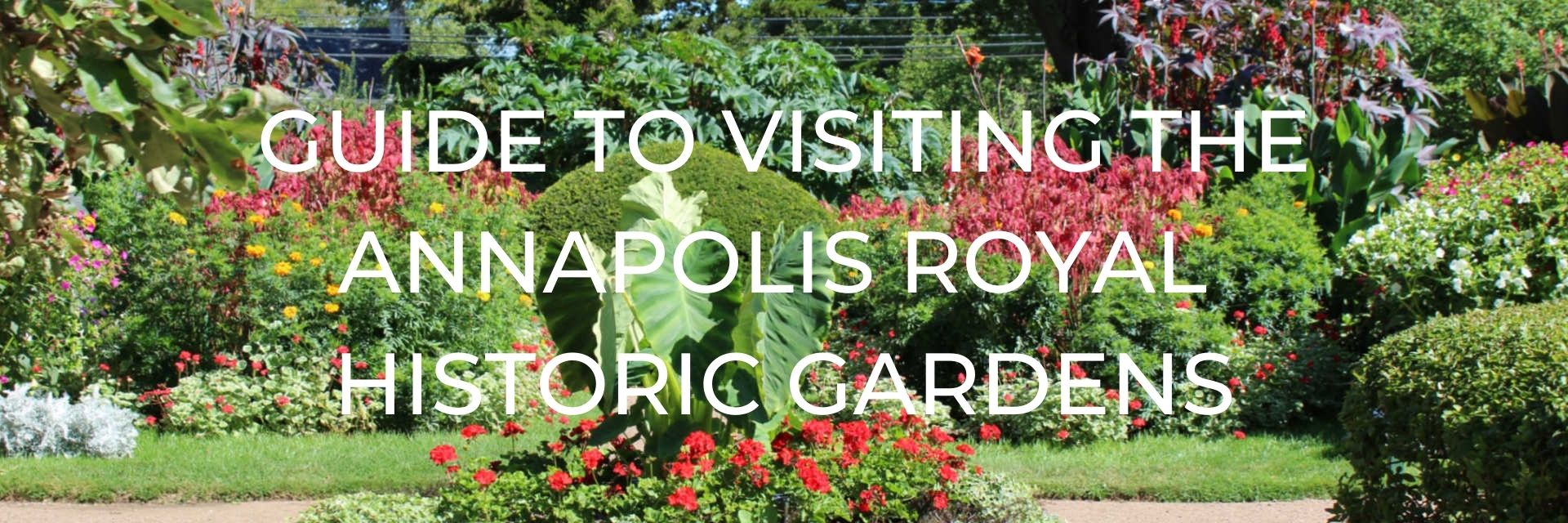
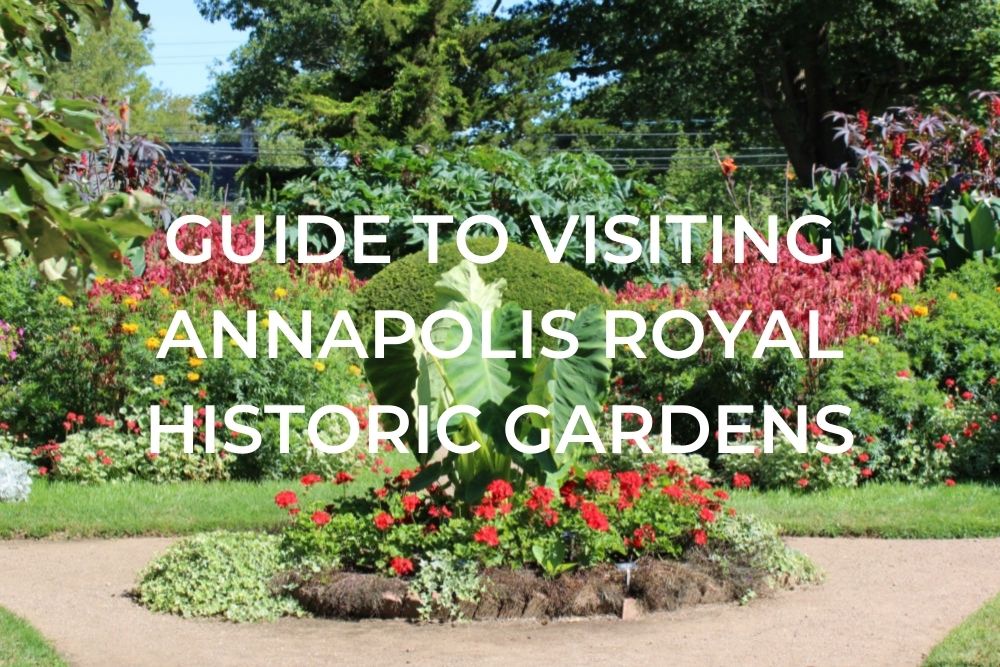
The Historic Gardens are set on a gentle hill in a pretty setting overlooking a tidal river valley. They were designed to reflect various periods of local history through a gardening perspective and the relatively mild Annapolis Valley climate helps to grow a great diversity of plants.
There are 17 acres with various historic themes such as the glorious Victorian Garden, a Knot Garden styled after a hedge garden from the Middle Ages, and an Acadian house and vegetable garden from the 1600s.
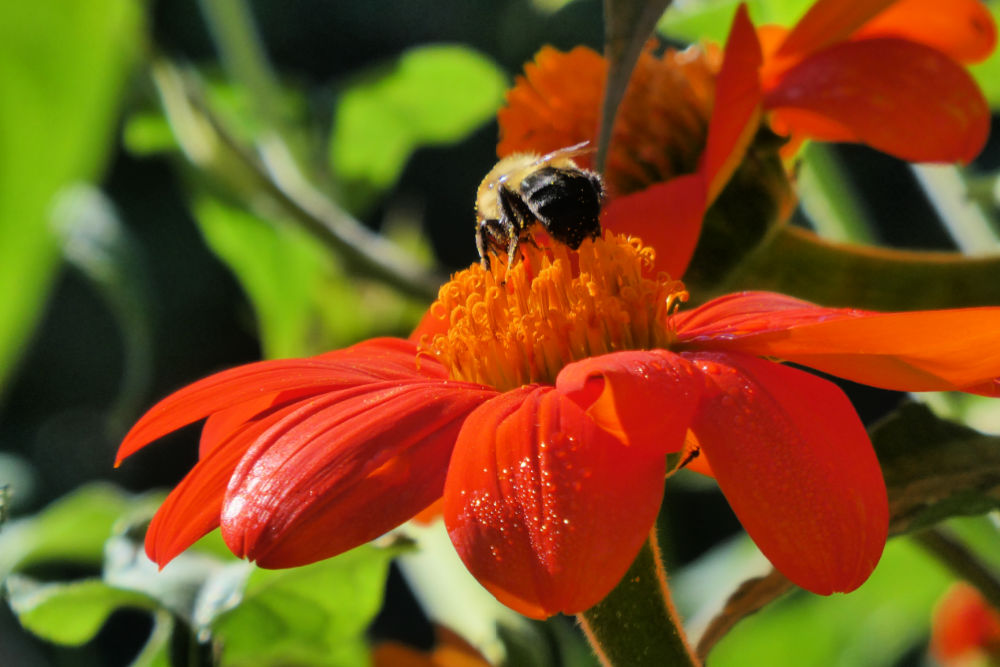
This post may contain affiliate links. Please read our full disclosure policy here.
After a visit to the gardens, you’ll see why there were named the 2015 Canadian Garden of the Year at the Canadian Garden Tourism Awards. They are gorgeous and a wonderful resource for novice and avid heritage gardening enthusiasts alike.
The Historic Gardens are a place of serenity and beauty which make for a wonderful morning or afternoon out for those in the local area. Alternatively, they offer a bit of calm and nature in the middle of a busy Nova Scotia vacation; so do be sure to add them to your visit to the Annapolis Royal area.
TABLE OF CONTENTS
HIGHLIGHTS OF ANNAPOLIS ROYAL HISTORIC GARDENS
- Victorian Garden
- Boardwalk and Dyke Trail
- Governor’s Garden
- Rose Garden
- Acadian House and Garden
- Innovative Garden
PLAN YOUR VISIT TO ANNAPOLIS ROYAL HISTORIC GARDENS
Are Annapolis Royal Historic Gardens Worth the Visit?
ADD TO YOUR ITINERARY
HIGHLIGHTS OF ANNAPOLIS ROYAL HISTORIC GARDENS
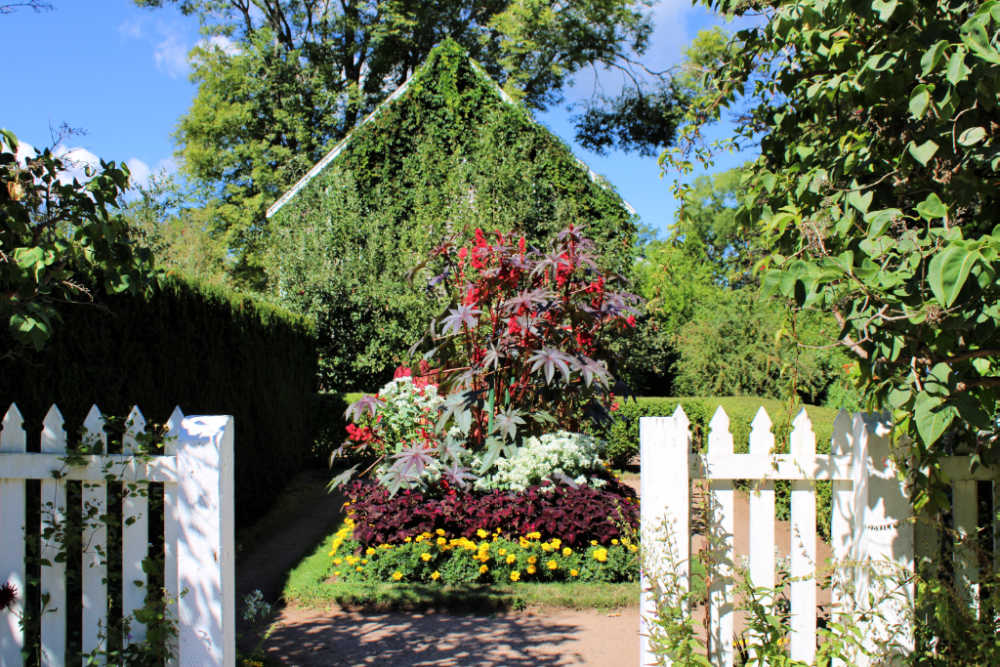
VICTORIAN GARDEN
Without a doubt, the most colourful part of the garden on our visit in early September was the Victorian Garden with its bold, vibrant annuals.
The Victorian society was known for their formality and this part of the Historic Gardens follows suit. It also reflects the style of gardening during that period when many new and exotic plants from around the world were discovered and then brought back “home” by explorers to be cultivated in their homelands.
Because the plants weren’t native to these areas, they would have been expensive and time-consuming to grow but they had the resources available during this period to help them grow and thrive. And they thrive indeed at the Historic Gardens!
Plants such as geraniums, salvia, zinnias, and snapdragons that were only tiny bedding plants in early June are some of the highlights of the gardens come September, especially those have reached six or seven feet tall!
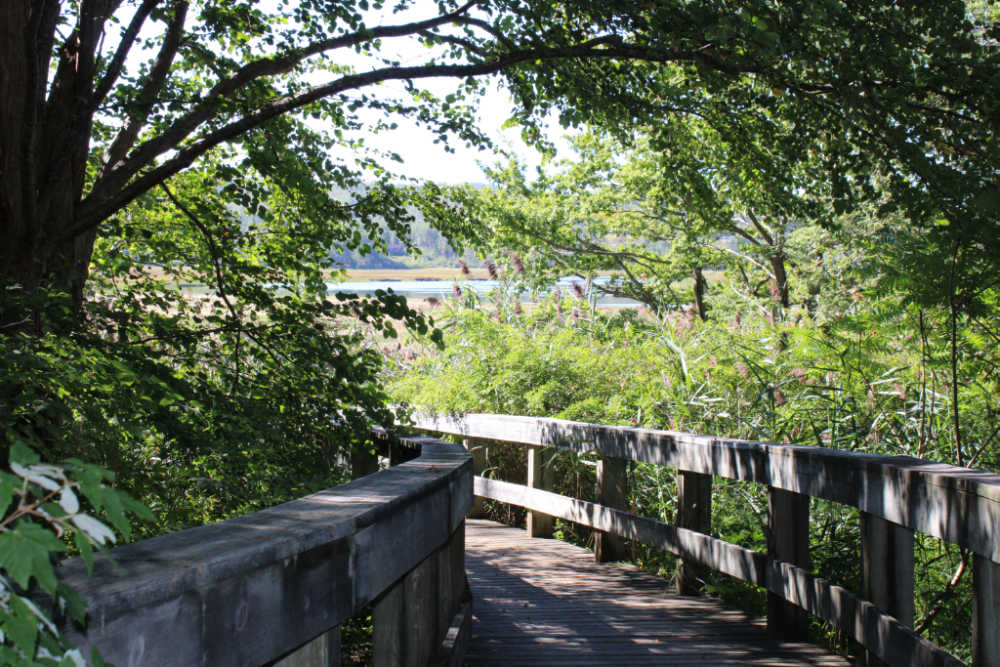
BOARDWALK AND DYKE TRAIL
Perhaps one of my favourite parts of the gardens is the boardwalk which winds through the shade and overlooks a small marsh and Acadian dyke. It is called the “Elephant Grass” boardwalk and almost feels like you’ve left the gardens and are alone because the grass is so tall around you. If you stop and listen, you may also hear animals rustling in the grass. We heard what we think might have been a deer when we visited. We aren’t sure because we couldn’t see it but whatever it was it sounded quite big!
The boardwalk also has one of the entrances to the Dyke Walk along Allain’s River. This is about a ten-minute walk along the area where the Acadians first began to dyke the marshes and installed one of North America’s first grist mills on the continent’s first wheatfield. The walk is quiet, refreshing, and a good place to enjoy some birdwatching with lovely views back to the gardens.
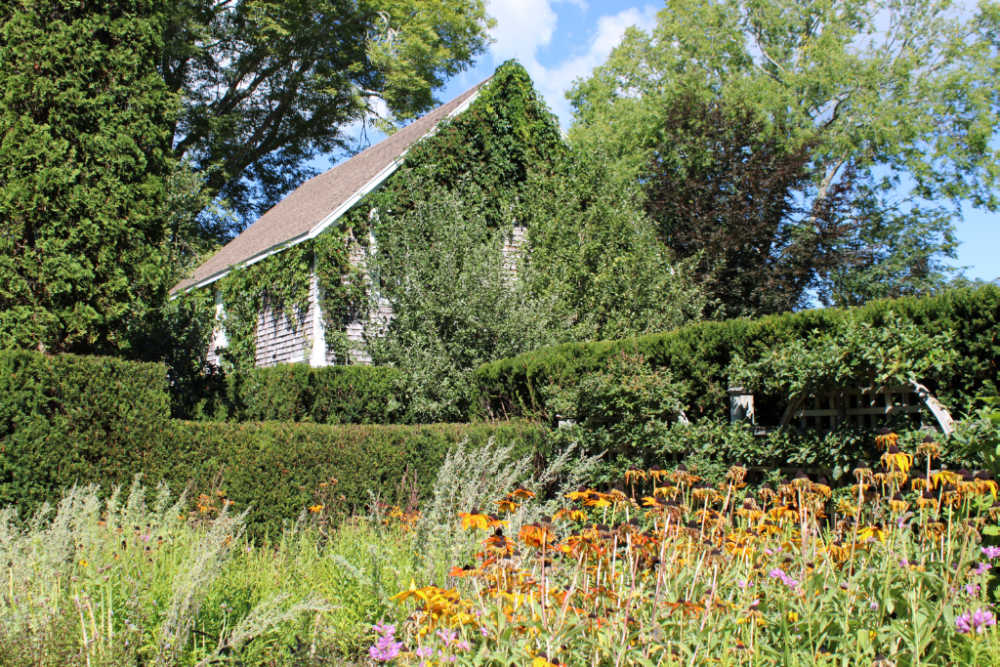
GOVERNOR’S GARDEN
From 1710 to 1749, the little town of Annapolis Royal was the capital of Nova Scotia and therefore the home of the governor of the colony. The Governor’s Garden is laid out as a formal garden based on the description from the original governor’s garden from 1748.
This garden is made with straight, raised beds surrounded by a hedge of Hill’s Yew. It is planted with herbs, flowers, and fruit trees that would have grown during the 1700s.
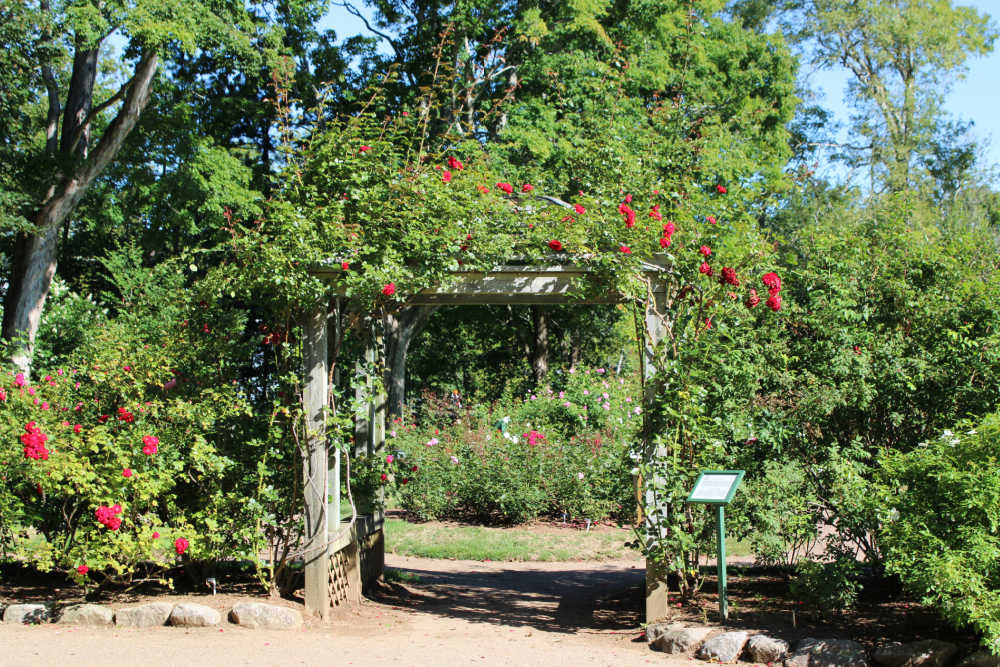
ROSE GARDEN
Perhaps one of the most popular parts of the garden, especially during their summer peak, is the Rose Garden.
This garden displays roses from cultivars that were popular from the time of first settlers in Nova Scotia, through the Victorian era, to present day. There are about 250 varieties of roses represented in the 2,000 rosebushes in the Rose Garden.
Along the main path you’ll find roses selected from varieties available during the time of the first Acadian settlement. At the end of the garden is a hedge that encloses a rose maze!
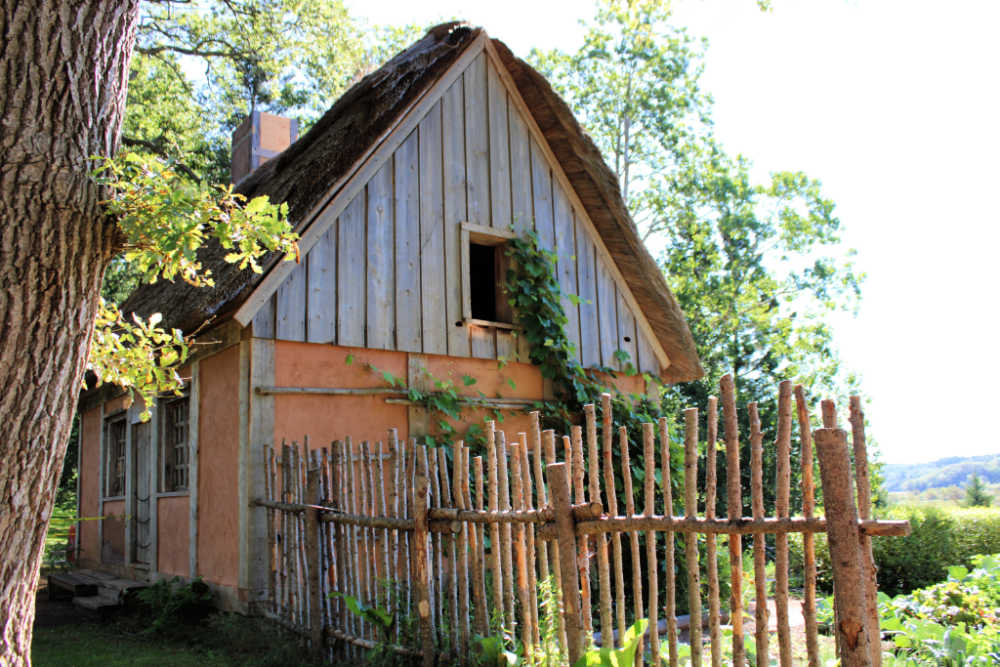
ACADIAN HOUSE AND GARDEN
The earliest European settlers were the Acadians who settled this region and, with their innovative use of dykes, successfully cultivated the land with a variety of fruits and vegetables. The Historic Gardens now includes a replica of a 1671 Acadian house complete with a thatched roof and a traditional Acadian vegetable garden, called a ‘potager’, surrounded by a modest stick fence to keep out wild animals. In this garden, they would have grown medicinal herbs, such as yarrow and sage, and many types of vegetables such as cabbage, turnip, carrots, beets, parsnips, and onions.
The Annapolis Valley region is very well known today for its apples that were introduced to Nova Scotia back in the 17th century with the first Acadian settlements. Most Acadian farms in those times had orchards with plums, pears, cherries, and especially apples, used mainly for making cider. The apple trees in the Historic Gardens today are varieties that would have been available in Acadian times.
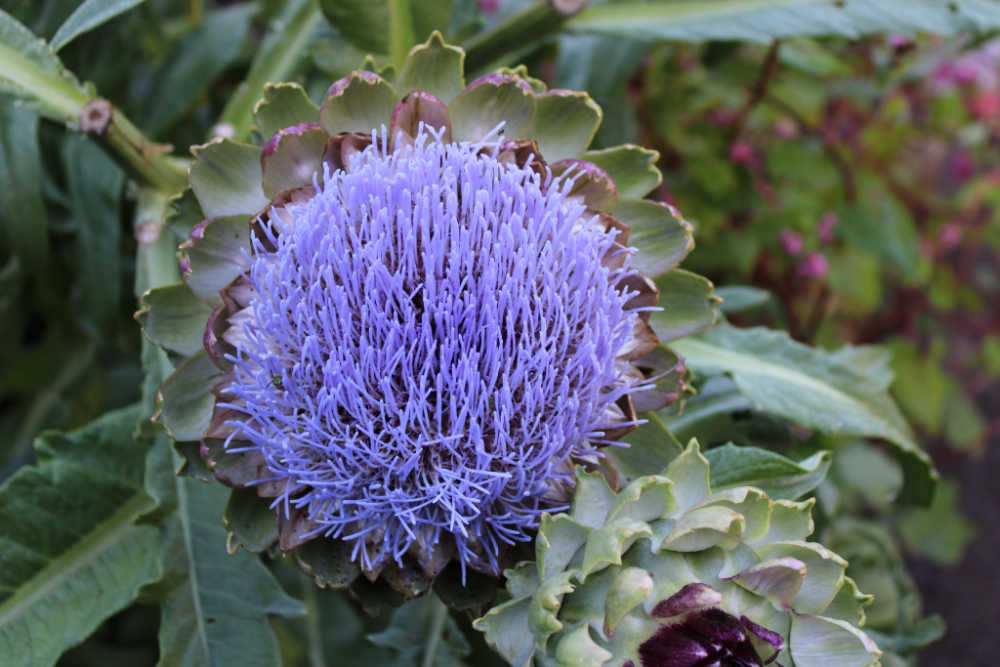
INNOVATIVE GARDEN
For a look at modern fruits, vegetables, and flowers you can also check out the Innovative Garden. This space shows Maritime gardeners what’s new and what works in our climate. This garden is for experimentation so you may find new things growing here with each visit, in addition to a bed of ‘Heirloom Vegetables’.
‘Heirloom Vegetables’ are varieties of vegetables that have been passed down through generations using seeds carefully saved each year. To be considered heirloom the variety has to be on record for at least 70 years and are considered by many to be better than their modern-day hybrid counterparts.
PLAN YOUR VISIT TO ANNAPOLIS ROYAL HISTORIC GARDENS
Information last updated September 2020
In addition to the beautiful gardens, there is also a café and gift shop on-site at the Historic Gardens.
The Elm Tree Café makes light lunches and refreshments such as sweets and frozen treats for indoor or outdoor dining under the shade of a giant weeping elm.
The Garden Shop features handcrafted items from Maritime artisans as well as books and other gift items. All proceeds help support the maintenance and development of the Historic Gardens. The shop is located just off the entry Courtyards so it is accessible even if you don’t visit the gardens themselves, or you can shop online.
HOW TO GET THERE
The Annapolis Royal Historic Gardens are located at 441 St. George Street, Annapolis Royal, Nova Scotia, B0S 1A0.
The gardens are easy to access from both Hwy 101 and Hwy 1 (Evangeline Trail) in Nova Scotia.
Free parking is available on-site near the entrance to the gardens and across the street, which is marked with a ‘Visitor Parking’ sign.
HELPFUL LINKS:
- If you need an app that will navigate you around whether walking, driving or using public transport and even works offline then click for a guide about how to use Here WeGo.
OPENING HOURS
The Historic Gardens are open seven days a week, including holidays until October 31 (for the 2020 season). To see what is currently in bloom to help plan your visit, you can view their “Bloom Report” or sign up to receive the report via email.
The Gardens and the Garden Shop are open daily from 0900 – 1700. The shop may be open later than October 31 for the 2020 season. If you’d like to visit after October 31, check here to see if it is still open.
The Elm Tree Café is normally open from 1100 – 1600 from early June until late September but it has closed a little early for the 2020 season.
We’d recommend giving yourself an hour or two to explore these exceptional gardens; a little more if you plan to have lunch in the café.
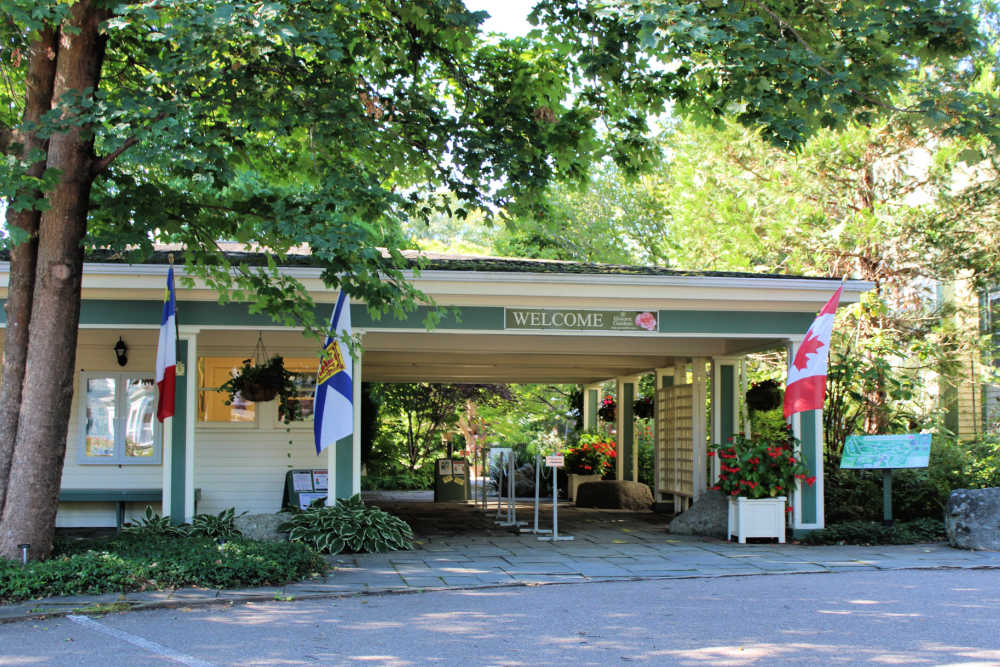
HOW TO BUY TICKETS & SAVE MONEY ON ADMISSION
Regular admission is $16.00 for adults and children are 18 are free.
For the remainder of the 2020 season, residents of the ‘Atlantic Bubble’ (New Brunswick, PEI, Newfoundland & Labrador, and Nova Scotia) are being offered a special rate of $10.00 (including tax).
If you live nearby and will be making multiple visits during the year, you may want to consider an Annual Membership. The 2020 membership prices (including tax) are:
- Adult Membership $45.00
- Senior Membership (60+) $40.00
- Student Membership (18+) $4000
- Family Membership (two parents plus dependent children 18+) $95.00
An annual membership would pay for itself after only three visits at regular adult admission prices and gives you voting privileges in the Annapolis Royal Historic Gardens Society, the Bloom Report, and other benefits from time to time.
If you decide to purchase the Annual Membership during a visit, they will credit your admission to the price of your membership.
ACCESSIBILITY
Paths in the gardens are either hard-packed gravel or wooden (such as on the boardwalk or little bridges) and are generally flat with some slight hills. Where there are stairs, such as from one part of the path to the Acadian House, there are also alternate access routes along the path without stairs.
There are a wheelchair and scooter available on a ‘by donation’ basis to use during a visit.
Registered service animals are permitted in the Gardens.
We visited the Historic Gardens on an early September morning and thoroughly enjoyed our visit. Although at their most spectacular in the summer, especially with all the roses in bloom, don’t hesitate to visit in the shoulder seasons too. We are planning to go back in the spring to see all the blossoms (especially the apple blossoms!) and I’m just counting the days until the leaves start changing to go back to take in the fall foliage.
Heritage gardeners will enjoy learning more about gardening methods and materials from the past four hundred years of local history, but even if you aren’t a gardener (like us!) we still think you’ll enjoy the visit. Take your time to stroll the many paths through the trees, around ponds, and through the flowers and just enjoy the beauty all around.
See what others think of this attraction on Tripadvisor.
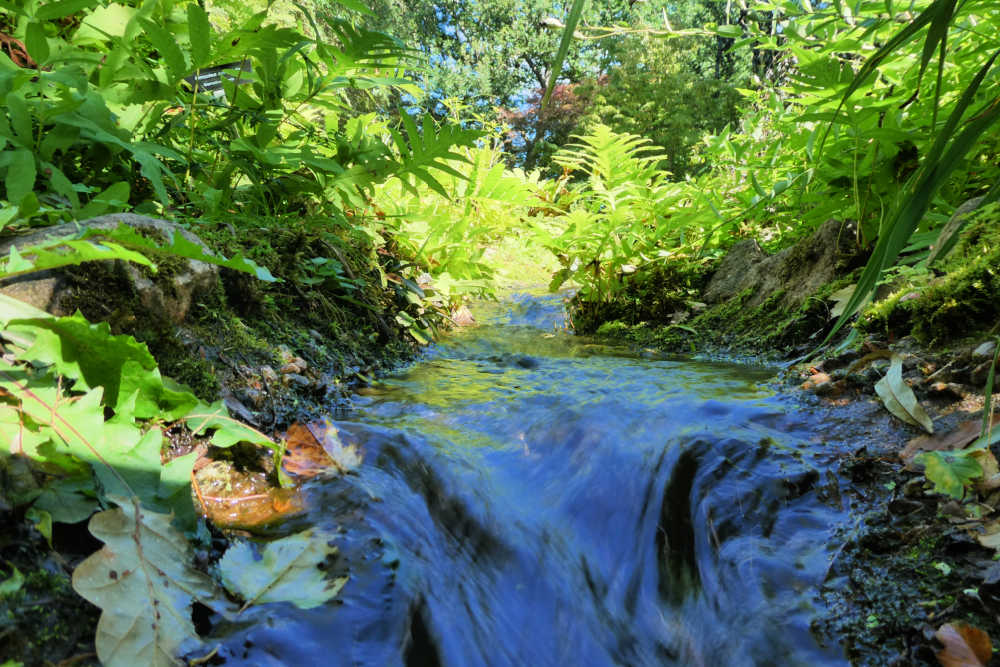
ADD TO YOUR ITINERARY
IN THE ANNAPOLIS ROYAL AREA
- Considered a key stronghold for Nova Scotia/Acadie (depending on if you were British or French), Fort Anne is a lovely place to learn about the early history of this area. The site features officers’ quarters, a French gunpowder magazine, grassy ramparts, parade grounds, cannons, and a Heritage Tapestry that depicts 400 years of history and settlement.
- Built in 1889 on the site of the old Government House, the Annapolis Lighthouse is perched on the water’s edge on St. George Street on a boardwalk that is just perfect for a stroll along the waterfront. The lighthouse marks the pretty, historic town of Annapolis Royal, and signals the end of navigable waters for vessels on the Annapolis River.
- Port-Royal Habitation is one of the most historically important sites not just in Canada, but all of North America. It is the first European settlement north of St. Augustine, Florida established in 1605 by Sieur de Mons and Samuel de Champlain. Today you can visit the reconstruction of the French fur-trading post to explore the governor’s house, blacksmith’s shop, communal dining room, and other rooms (all furnished with period reproductions) for a fascinating look into the life of the early French settlers.
OTHER GARDENS TO VISIT IN NOVA SCOTIA
If you like to stroll through tranquil gardens, we think you’ll also like:
- Started in 1753 as a private garden, the Halifax Public Gardens are now compared to the pretty parks of Europe and considered to be one of the loveliest formal gardens in North America. They are set inside a beautiful wrought-iron fence and the 16+ acres in the heart of the Halifax are worth visiting at any time (or many times!) of the year to see the ever-changing colours of the trees and flowers.
- Created over the past 30 years the Tangled Garden is a wonderful place to visit, slow down, and literally smell the flowers. There are paths of clover, walls of flowers, ornamental grasses, perennial flowers, herbs, and more to enjoy. This is also a great place to pick up a little flavour of the region to remember your visit – perhaps a homemade chutney, vinegar, or jelly made with herbs and fruit.
- The Cole Harbour Heritage Farm Museum Gardens are a little oasis in the middle of a modern suburban area. Here they grow heritage plants that they have saved from old farms, along with newer varieties of flowers and vegetables. Come take a stroll along the tree and shrub lined paths out to the pond to get away from the busy city.
RESOURCES | PLAN YOUR TRIP TO NOVA SCOTIA
- Fodor’s Travel: Nova Scotia & Atlantic Canada
- Frommer’s Easy Guide to Prince Edward Island, Nova Scotia, and New Brunswick
- Moon Atlantic Canada: Nova Scotia, New Brunswick, Prince Edward Island, Newfoundland & Labrador
- Lonely Planet: Nova Scotia, New Brunswick and Prince Edward Island
- Nova Scotia Book of Everything
- Bradt: Nova Scotia – This book is the most comprehensive and what I consider to be the very best Nova Scotia guidebook.
Some of the links in the post above are affiliate links. This means if you click on the link and purchase the item, we will receive an affiliate commission but this does not affect the price to you. Please read our full disclosure policy here.






